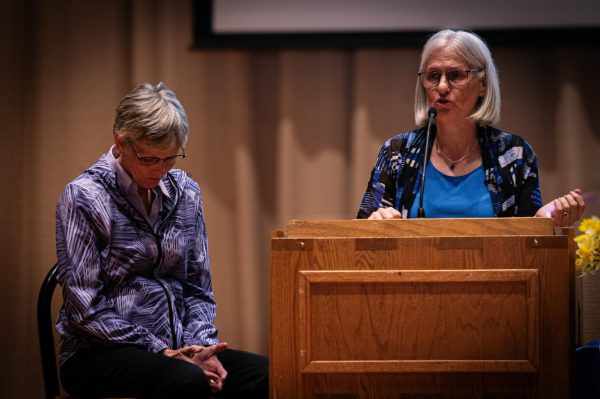Disability Services highlights the differences between ESAs and pets
Have you ever wondered what those animals you see walking around campus are? Not Luther’s famous squirrels and deer, but rather the animals that walk around with their humans, enjoying pets and cuddles from stressed college students.
Luther College provides accessibility and disability services for any student that might need help. The purpose of this service is to create an equitable environment for all Luther students. This can be done through various avenues, including academic, dining and housing accommodations.
One of the ways that Luther makes these services known are through workshops offered by the Center of Academic Enrichment (CAE). On Wednesday, February 15, Disability Services had intended on holding a workshop led by Accommodations Coordinator Sara Hallberg. The event did not occur as students did not sign up for the event, but Hallberg intended to explain to students what ESA’s are and how they differ from just a “pet”.
“We have had an increase in requests for ESA accommodations,” Hallberg said. “Therefore, it is important for students to understand what an ESA is, the purpose of an ESA, and how it differs from a pet or service animal. These definitions impact our decision for an approval or deferral.”
One of the key points in the presentation that Hallberg wanted to make is that an ESA or service animal is very different from a pet. For example, service animals are animals that get formally trained to do a specific task for their owner. An ESA is an animal that is not formally trained, but is there to alleviate the symptoms of a diagnosed disability. Lastly, a pet is just an animal that is only there for the pleasure and enjoyment of their owner.
Mariah Hueneke (‘26) likes the idea of letting pets live on campus, but understands the importance of these different categories for animals.
“I love to see the cat birthday parties some students have on campus or people walking their dogs,” Hueneke said. “However, I understand that they are here for a reason, [because] some people need the accommodation.”
Luther also has regulations for which areas on campus these animals are allowed to be in. Only service animals are allowed in all public areas with their owner since they are necessary for their owner’s health and trained to assist in these cases. Since ESA’s are not formally trained, they are limited to the public areas they are allowed to be in.
Mary Brady (‘25) commented on how people at Luther use this terminology.
“The terminology is used very loosely,” Brady said. “People often think of getting a pet and having a dorm pet, but labeling it and calling it an ESA so the college will allow it.”
Understanding what each category of animal is and what its purpose is is necessary to get accepted for an accommodation. Lacking this understanding can cause a deferral for someone who might really need the assistance. Hallberg explained that pets are not allowed on campus unless there is documentation of it being a service animal or an ESA.
“Hopefully students would walk away with a respect for the process,” Hallberg said. “And understanding that the process in place is in the best interest of the student, the animal, and Disability Services.”
Disability Services are here to aid Luther students so they have an equitable chance to succeed in their college careers. One way they do that is by ensuring that students have the information they need about accommodations. If you would like to learn more about the ESA accommodation process, visit https://www2.luther.edu/disability-services/.






